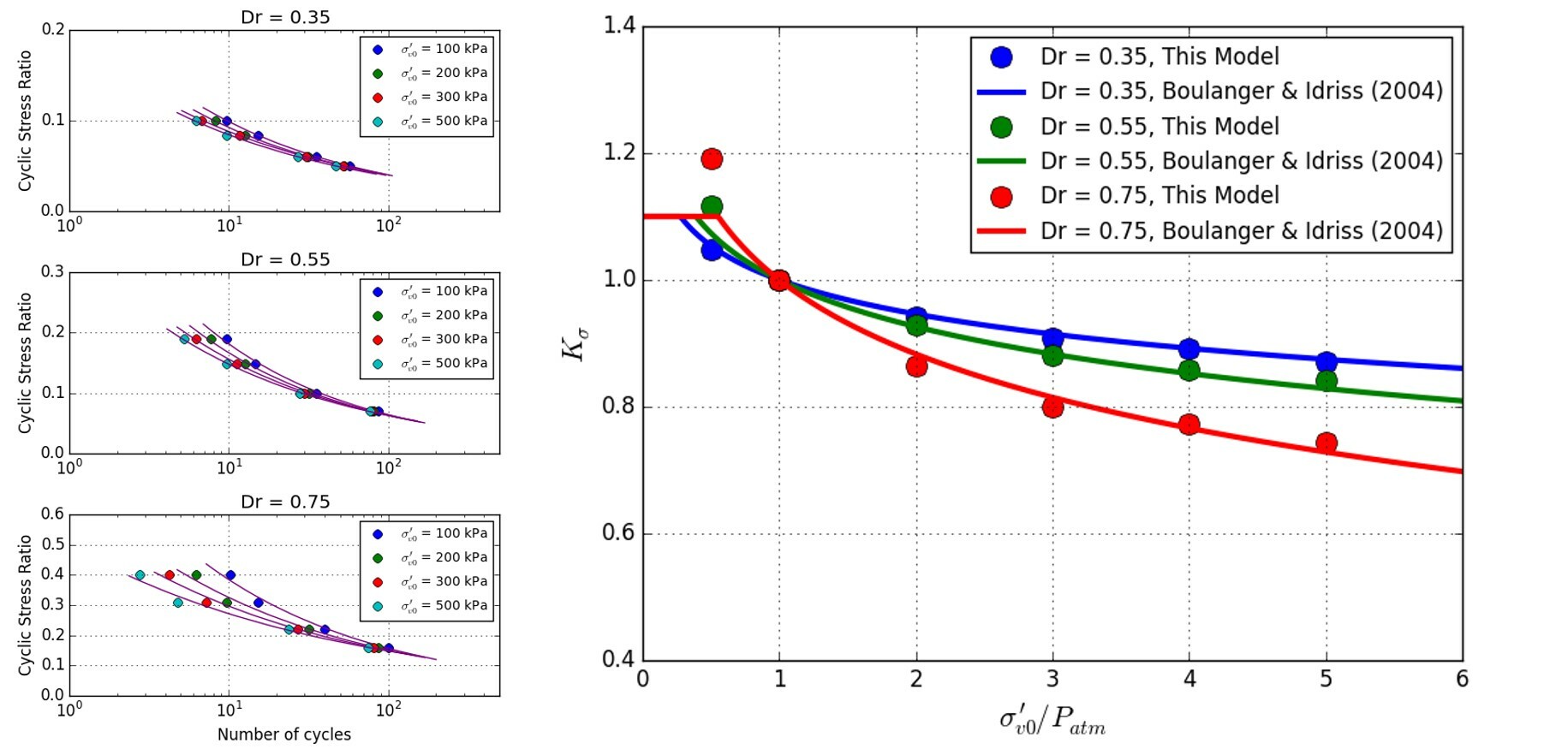Background
Fully nonlinear methods can be formulated in terms of effective stresses and the fluid-mechanical interaction behaviors can be simulated before, during, and following dynamic shaking. Multi-dimensional nonlinear constitutive models are being used increasingly to simulate the phenomenon of liquefaction for sand-like geotechnical materials in earthquake engineering practice, e.g., from the relatively simple uncoupled models like the cyclic-counting Dames & Moore model (Dawson and Mejia, 2012) to the relatively complex effective stress-based models like the PDMY02 model (Elgamal et al., 2003), DM04 (Sanisand) model (Dafalias & Manzari, 2004), UBCSand model (Beaty et al., 2004), and PM4Sand model (Boulanger & Ziotopoulou, 2015), to name some. While all of the aforementioned models have merit they also have some notable limitations and many of them are not formulated for 3D modeling.
P2P-Sand: An Introduction
Itasca is pleased to announce P2P-Sand (Practical Two-Surface Plasticity model for Sands), our new practice-friendly 3D liquefaction constitutive model for FLAC3D based on the DM04 (Sanisand) model (Dafalias & Manzari, 2004). By revising some formula without destroying the conciseness of the original DM04 model, the modifications improve the comparative results between model simulations and various laboratory and field observations with various initial and loading conditions. In addition, Itasca's new liquefaction model embraces an easier and more practical calibration procedure in terms of in-situ data, instead of experimental data, greatly reducing the laboriousness of calibration.
Itasca's enhanced model:
- retains the general 3D formulation, considering Lode angle effect, and thus can be used for general 3D boundary value problems
- switches all void-ratio related formula, including the elastic modulus, plastic hardening modulus, and critical state, to be relative density related
- requires only the initial soil relative density (Dr) and initial stresses to match the semi-empirical relation of CRR versus some in-situ parameter such as (N1)60 or qc1N when using the default parameters*
- preserves the feature that one set of model constants is used to simulate different responses with different initial relative densities and initial stress states
The following table compares a number of factors for selected liquefaction constitutive models.

Validation
Single-zone FLAC3D models were used to test and evaluate this new liquefaction constitutive model considering the following:
- CRR versus (N1)60 and number of cycles
- Modulus reduction and damping
- Undrained Cyclic Loading
- Empirical Kσ curves





Some Examples
The following engineering and laboratory scale simulations using the new liquefaction model are performing very well and behaving as expected.


More Information
For more details about Itasca's new liquefaction model, P2P-Sand, please see the following paper:
Cheng, Zhao (2018). "A practical 3D bounding surface plastic sand model for geotechnical earthquake engineering application," Geotechnical Earthquake Engineering and Soil Dynamics (GEESD) Congress V, June 10-13, 2018, Austin, Texas, United States.
